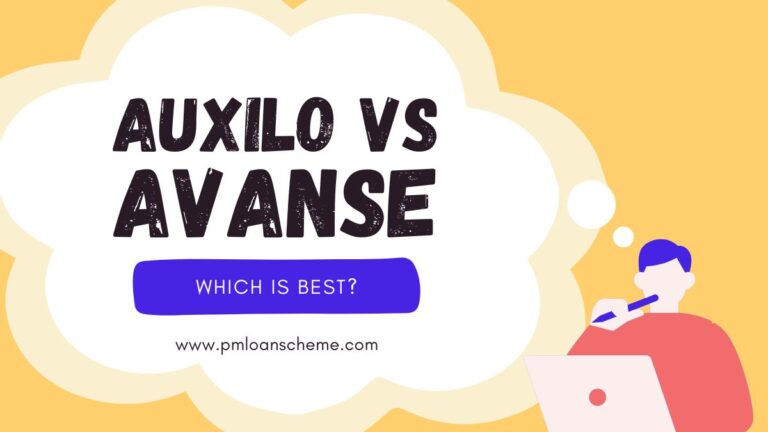Education Loan Sanction Letter: Securing an education loan is often essential for students aspiring to pursue higher education, especially in programs and institutions with high tuition fees. An education loan can ease financial burdens, but the process is detailed and requires a clear understanding of each stage, particularly when it comes to the loan sanction letter. This document not only confirms the bank’s approval of the loan but also outlines the terms, interest rates, and repayment details, making it critical for students and their families to navigate this process efficiently. Here, we delve into each stage of the education loan sanction process and its nuances.
What is Education Loan Sanction Letter?
An education loan sanction letter is an official document issued by a bank or financial institution after it approves a student’s loan application. This letter is more than a mere formality; it acts as a binding agreement between the lender and the borrower, encompassing key details about the loan, including the principal amount, interest rates, repayment terms, and conditions. Essentially, it provides a guarantee that the lender will disburse the approved amount according to the specified terms, which can be critical for both domestic and international educational institutions requiring proof of funds.
The sanction letter also serves as a testament to the financial backing needed for securing a student visa, as many immigration authorities and universities require students to prove that they have the necessary funding to support their studies. Hence, securing this document on time can be as vital as the admission itself.

When and How Do You Get the Education Loan Sanction Letter?
Securing an education loan sanction letter is a pivotal moment for students aiming to fund their studies through a loan. This document confirms a bank’s agreement to lend the specified amount under certain terms, and obtaining it is a multi-step process that requires careful timing and preparation. The exact timing of receiving this sanction letter depends on the completion of specific criteria and steps, from admission to an accredited institution to fulfilling the bank’s documentation requirements. Here, we examine when and how you can obtain this essential document in the education loan process.
When Do You Receive the Education Loan Sanction Letter?
The education loan sanction letter is issued only after the bank thoroughly assesses the application. Generally, this happens once a student has:
- Received Admission to a Recognized Institution: Most banks require students to be accepted into a recognized university or college, whether domestic or international. Some banks may consider issuing a provisional sanction based on a conditional admission offer, but the final letter is usually granted after confirmed admission.
- Fulfilled Eligibility Requirements: Banks have eligibility criteria such as the applicant’s academic performance, course type, and the potential co-applicant’s financial status. The sanction letter is only issued if all requirements are satisfactorily met.
- Completed Document Submission and Verification: Once all necessary documents are submitted—such as admission letters, identity proofs, income details, and collateral documents (if applicable)—the bank undertakes a verification process. After successful verification and an internal assessment, the sanction letter is granted.
- Passed Credit Assessment and Evaluation: The co-applicant’s credit history and financial background play a significant role in determining the bank’s willingness to sanction the loan. If the co-applicant or guarantor has a favorable credit score and stable financial standing, the bank is likely to proceed with approval.
Typically, it takes about 2-4 weeks from the application date to receive the sanction letter, but this timeline can vary depending on the bank’s internal processes and the completeness of the application.
How Do You Obtain the Education Loan Sanction Letter?
The process of obtaining the education loan sanction letter is multi-faceted, involving several key steps:
- Research and Application Submission:
Start by researching education loan options from various banks and comparing their interest rates, loan tenures, and eligibility requirements. Once you select a bank, complete the loan application form accurately and submit it along with the required documents. - Submission of Required Documentation:
Banks require a comprehensive list of documents to process an education loan. These typically include:
- Personal Identification Documents: Aadhar card, passport, or other identity proofs.
- Educational Documents: Admission letter, academic records, and any standardized test scores.
- Financial Documents: Income proofs and credit details of the co-applicant or guarantor.
- Collateral Documents (if required): Property papers, fixed deposit certificates, or any other asset proofs for secured loans. Proper organization and complete submission can expedite the process, so ensuring all paperwork is in order before submission is crucial.
How to Submit Education Loan Sanction Letter?
- Evaluation and Verification by the Bank:
After submission, the bank evaluates the applicant’s academic and financial viability. This involves a thorough credit assessment and may include a personal interview with the applicant to better understand the course and career path. - Approval and Sanction Notification:
If the application meets the bank’s standards, they proceed with the sanction. The applicant is then notified of the approval, and the bank issues the sanction letter. This letter is generally provided in both hard copy and electronic formats, which the applicant must review carefully. - Acceptance of Sanction Letter Terms:
Once you receive the sanction letter, read through every clause, especially details on the loan amount, interest rate, repayment tenure, and other terms. Sign and return a copy of the letter as acceptance of the bank’s terms. Some banks might require the co-applicant to sign as well, particularly for higher loan amounts or secured loans. - Legal Formalities for Secured Loans (if applicable):
For loans that require collateral, banks typically conduct legal verification of the pledged asset. This step involves documentation review, legal clearance, and the signing of collateral agreements, which must be completed before funds can be disbursed. - Disbursement Arrangements:
After the sanction letter is accepted, the bank arranges the disbursement of funds. Depending on the bank and the institution’s requirements, disbursement may be a lump sum or installment-based, often directly transferred to the educational institution.
By following this process carefully, students and their families can obtain the education loan sanction letter efficiently, setting them on the path to financing their academic goals with clear terms and a well-defined repayment structure.
Pre-Approved Education Loan Sanction Letter
Education loans are traditionally sanctioned only after students have secured admission to a recognized university, especially for those aiming to study abroad. However, this sequence can present challenges for students who need confirmation of funds before finalizing their admission or visa processes. In these cases, a pre-approved sanction letter serves as a valuable tool, offering provisional loan approval that allows students to demonstrate financial support in advance.\
Education Loan Sanction Letter format
You can download the education loan sanction letter pdf via official website of the corresponding bank you are applying for. Or, you can check the sample education loan sanction letter below.
Education Loan Sanction Letter Sample
Based on the format mentioned above, here is a sample for an education loan sanction letter. Since the template for each lender varies significantly, we have adopted a format followed by a prominent public sector bank in India for study abroad education loans.
| XYZ Bank [Bank Letterhead] To, Mr. AAA S/O BBB [Address of Borrower] New Delhi Mr. BBB [Address of Parent/Co-borrower] Date: 02/11/2024 Subject: Sanction of Educational Loan Amounting to ₹30,00,000 Esteemed Sir/Madam, It is with great pleasure that we convey the approval of an educational loan amounting to ₹30,00,000 (Rupees Thirty Lakhs) in your favor, under the stipulations outlined herein. | |
| Borrower Name | AAA |
| Co-Borrower Name | BBB |
| Guarantor Name | ZZZ |
| Course Detail | Master of Computer Science, Texas University, USA |
| Amount Sanctioned | INR. 30 Lakhs |
| Rate of Interest | 12% per annum |
| Type of Interest | Floating |
| Margin | 5% |
| Credit Insurance Premium | INR. 30,000/- |
| Repayment Period | Repayable in 120 equated monthly installments of ₹27,000 each, commencing on 06/06/2026 |
| Holiday/Moratorium Period | 36 months |
| Amount of EMI | ₹52,080 |
| Processing Fee | ₹5,000 |
| Documentation Fee | Nill |
| Other Charges | Nill |
| Disbursement | The loan will be disbursed upon receipt of the student’s visa, contingent upon compliance with all terms and conditions. |
| Security Details | Primary: Assignment of future income of the student for the settlement of installments. Collateral: Credit guarantee on the co-borrower’s residential property. Guarantor: CCCC |
| Loan Account Number | 2344****7646 |
| Loan Account Branch: | HSR Layout, Bengaluru |
| IFSC Code | BB09HB |
| Penal Interest | In the event of default in any loan repayment or non-adherence to the stipulated terms and conditions, the borrower shall incur a penal interest of 2% on the defaulted or irregular amount. |
| This sanction is, however, contingent upon: 1. The execution of the loan documents in accordance with the bank’s prescribed format and guidelines. 2. The rate of interest and EMI may be subject to periodic adjustments. 3. The validity of this sanction is limited to six months from the date of issuance of this letter. 4. Any third-party liability incurred by the bank as a result of erroneous information or declarations provided by the borrower shall rest solely with the borrower. We kindly request that you confirm your acceptance of the aforementioned terms and conditions. Thank you for your attention to this matter. Yours sincerely, Manager XYZ Bank Ltd | |
What Is a Pre-Approved Education Loan Sanction Letter?
A pre-approved education loan sanction letter is a provisional commitment from a bank or lender that offers conditional approval of a student loan before the student has secured admission to a university. This letter essentially signifies that, based on the applicant’s preliminary qualifications and financial standing, the lender is willing to support their educational pursuits financially. Although not a final loan approval, this pre-approved letter can play a critical role in various stages of the application process, including:
- Admission Process: Many universities and programs require proof of funding to confirm a student’s financial capability to cover tuition and living expenses.
- Visa Application (in Select Countries): Some countries mandate that students provide proof of funds or pre-approved loans as part of the student visa process.
Obtaining a pre-approved sanction letter can ease these procedural demands, giving students the confidence to move forward in their education journey even before they have a confirmed place in a specific institution.
Pre-Approved Education Loans Process
- Subject to Final Approval: Pre-approval is a conditional agreement and does not guarantee the final loan amount or terms. If the bank detects discrepancies in the student’s admission status, documentation, or financial conditions later, they reserve the right to withdraw or modify the pre-approved sanction.
- Validity Period of the Pre-Approval: Pre-approved sanction letters typically have an expiration date, often ranging from three to six months. Students must ensure that they secure admission and complete any remaining loan formalities within this period to prevent the need for re-approval.
- Potential for Change in Interest Rates: Since pre-approval is a preliminary agreement, the final sanctioned loan may come with different interest rates based on the market or the student’s finalized admission and financial details.
Documentation Required for Sanction Letter
The documentation required for obtaining a sanction letter varies by lender type and must be submitted alongside the initial loan application. Below is a comprehensive list of the requisite documents.
Required Documentation from the Applicant:
- Completed Loan Application Form: Thoroughly filled out in its entirety.
- Identity Verification: Acceptable forms include PAN card, passport, voter ID, etc.
- Proof of Residence: Recent utility bills (telephone, electricity, or water) reflecting current address.
- Passport Copy: A clear photocopy of the applicant’s passport.
- Academic Credentials: Transcripts from 10th, 12th, and undergraduate studies.
- Entrance Exam Results: Scores from relevant entrance examinations such as GRE, TOEFL, IELTS, etc.
- Admission Confirmation: A provisional offer of admission may be submitted if applicable.
- Statement of Educational Expenses: An itemized account of the anticipated costs associated with education.
- Passport-Sized Photographs: Recent photographs for identification purposes.
- Previous Loan Statements: Bank statements for any existing loans held with other financial institutions for the past year.
Required Documentation from the Co-Applicant:
- Identity Verification: Similar to the applicant’s requirements.
- Proof of Residence: Current address documentation.
- Income Verification: Documentation varies based on employment type, whether salaried or self-employed.
For Self-Employed Co-Applicants:
- Business Address Verification: Proof of the business location.
- Income Tax Returns: Last two years of filed IT returns.
- Tax Deducted at Source (TDS) Certificate: Relevant documentation as per income tax laws.
- Qualification Certificate: Proof of professional or academic qualifications.
- Bank Statements: Bank statements for the past six months.
For Salaried Co-Applicants:
- Salary Slips: The last three months’ payslips.
- Form 16 or IT Returns: Copy of Form 16 for the last two years or IT returns for the same period.
- Bank Statements: Last six months of banking history.
Should the applicant pursue a secured education loan, collateral documentation must also accompany the aforementioned documents.
Process for Obtaining an Education Loan Sanction Letter
Acquiring an education loan sanction letter entails a methodical and often protracted process. Candidates must select their lender, assemble requisite documentation, remit the processing fee, and await approval. Variances exist among lenders, as outlined in the sections below.
Public Sector Banks:
The process for obtaining a sanction letter from public sector banks can be relatively extensive, potentially spanning up to one month. The procedure typically involves three key steps:
- Completion of the application form at banks such as State Bank of India, Union Bank of India, and Bank of Baroda.
- Submission of the previously listed documentation along with any additional case-specific requirements.
- Payment of the loan processing fee.
Upon successful processing and approval of the application, the sanction letter will be dispatched to the applicant.
Private Sector Banks:
The procedure for obtaining an education loan sanction letter from private banks, such as Axis Bank, ICICI Bank, and IDFC First Bank, is as follows:
- Submission of the loan application form, either online or in person.
- Uploading documents online or delivering them to a nearby branch.
- Verification of documentation by the bank, followed by further processing of the application.
- Payment of the lender’s processing fee, typically ranging from 0.5% to 1% of the loan amount, plus GST.
- The sanction letter will be communicated via email or postal service.
For secured loans, the bank will conduct a property evaluation, while for unsecured loans, credit histories of both the applicant and co-applicant will undergo scrutiny.
Non-Banking Financial Companies (NBFCs):
The process for acquiring a sanction letter from NBFCs initiates with the submission of the loan application and necessary documents. Specific procedures for various NBFCs include:
- HDFC Credila: The sanction letter is typically issued the day following successful payment of the processing fee. HDFC Credila , SBI can also provide the letter before the applicant secures university admission, upon request.
- Avanse: The sanction letter is granted once documents and financial details are verified. Avanse provides five distinct loan types: Pre-Admission loans, Pre-Visa loans, Bridge loans, Fast-track loans, and the Certificate of Availability of Funds, catering to students at each stage of their educational journey.
- Auxilo and InCred: These institutions issue sanction letters in a similar manner, with Auxilo taking approximately 2-3 days and InCred about 5 days to verify and release the sanction letter. Students must remit the processing fee upon receiving provisional loan approval.
International Lenders:
International entities such as MPOWER Financing and Prodigy Finance provide education loans to students without the necessity of collateral or a co-signer. They typically extend a provisional loan offer within two days of application, valid for two weeks. Upon acceptance of the offer by the student, a Loan Confirmation Letter (also known as the sanction letter) is issued.
To facilitate the education loan process for students pursuing studies in the USA, MPOWER and Prodigy Finance issue two types of sanction letters:
- Conditional Confirmation Letter: Required when an I-20 is necessary from the institution.
- Confirmation Letter: Issued when applying for a student visa.
These letters can be accessed via the applicant’s account dashboard.
The education loan sanction letter serves as an official document delineating the particulars of your educational financing. It fulfills dual purposes: detailing the funding provisions and addressing inquiries from universities and visa authorities regarding financial support.
Upon receipt of the education loan sanction letter, it is imperative to meticulously review the specified terms and inform the lender of your acceptance. Failure to communicate acceptance may result in non-disbursement following the issuance of the sanction letter.
The path to obtaining a sanction letter can be arduous and may culminate in rejection if errors occur. To simplify this process and expedite your application, assess your eligibility for an education loan now and seize the opportunity to secure timely funding for your educational aspirations.
Conclusion
A pre-approved education loan sanction letter is an advantageous provision for students who need assurance of financial support during the early stages of their academic journey. This conditional agreement not only serves as proof of funds but also expedites the final loan approval process after admission confirmation. While it requires careful planning and timely action, securing a pre-approved sanction letter can pave the way for students to pursue international education with confidence, overcoming initial financial uncertainties and ensuring smooth progress through admissions and visa procedures.
FAQs on Education Loan Sanction Letters and Process
What is an education loan sanction letter?
An education loan sanction letter is a formal document issued by a lender, confirming the approval of a loan application for educational purposes. It details the loan amount, interest rate, repayment terms, and any conditions that must be met prior to disbursement.
What documents are required to apply for an education loan?
The documentation required typically includes:
1. A completed loan application form.
2. Proof of identity (e.g., PAN card, passport).
3. Proof of residence (e.g., utility bills).
5. Academic records (e.g., transcripts).
6. Entrance exam scores (if applicable).
7. Proof of admission to the educational institution.
8. A detailed statement of educational expenses.
What is the process for obtaining an education loan sanction letter?
The process generally involves the following steps:
Choose a Lender: Research and select a bank or financial institution.
Prepare Documents: Gather and complete all necessary documentation.
Submit Application: Fill out the loan application form and submit it along with the required documents.
Pay Processing Fee: Remit any required processing fees.
Await Approval: The lender will review your application and documents before issuing the sanction letter.
How long does it take to receive an education loan sanction letter?
The time frame can vary widely based on the lender. Public sector banks may take up to a month, while private banks and non-banking financial companies (NBFCs) can issue letters within a few days to a week, depending on their processes.
What factors can affect the approval of an education loan?
Factors influencing approval include:
1. The applicant’s credit history and credit score.
2. The income and financial stability of the co-applicant.
3. The reputation and accreditation of the educational institution.
4. The completeness and accuracy of the submitted documentation.
What happens if my application for an education loan is rejected?
If your application is rejected, the lender typically provides a reason for the denial. You can address these issues and reapply or consider other lenders that may have different eligibility criteria.
Is collateral required for education loans?
Collateral requirements vary by lender. Secured loans usually necessitate collateral, such as property or fixed deposits, while unsecured loans do not. Always check with the lender for specific requirements.
Can I apply for an education loan without a co-applicant?
Yes, it is possible to apply for an education loan without a co-applicant, particularly for unsecured loans. However, having a co-applicant can enhance your chances of approval and may result in better loan terms.
What is the moratorium period in education loans?
The moratorium period is the time during which the borrower is not required to make any repayments. This period often lasts until the completion of the course plus an additional few months, allowing graduates to secure employment before starting to repay the loan.
What should I do if I disagree with the terms in my sanction letter?
If you disagree with any terms outlined in the sanction letter, contact your lender promptly to discuss your concerns. You may request modifications or clarifications regarding the terms of the loan.
How do I accept the loan offer stated in the sanction letter?
To accept the loan offer, you typically need to sign and return a copy of the sanction letter along with any required documentation confirming your acceptance of the terms and conditions. Ensure you understand the obligations before proceeding.
What are the repercussions of defaulting on an education loan?
Defaulting on an education loan can lead to penalties, including increased interest rates, damage to your credit score, and legal actions. It’s crucial to maintain open communication with your lender and seek assistance if you encounter repayment difficulties.


